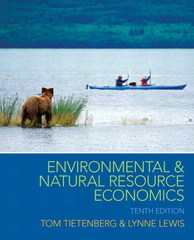$$help plz.
Question 5 (20 points) Consider the fixed-investment model with two alternative projects: the two projects have the same investment cost / and the same payoffs, R in the case of success and 0 in the case of failure. The entrepreneur has initial wealth A qH, 2. both projects have positive NPV if the entrepreneur works, but negative if she shirks PHR > qHR > I > PLR + B> qLR +b 3. pledgeable income is higher for project 2 but lower than the cost of investment PH ( R - Ap) B )
qHR > I and Show that monitoring is useful if and only if B-b C k, and hence a planner would be able to make all agents better off by reducing the capital stock in all periods. f) Suppose now that the agents are allowed to trade a useless, non-reproducible asset in fixed unit supply, which trades at the price p. We call this asset a "bubble" Argue that if p. > 0 and t+1 > 0 the agent must be indifferent between holding capital and the bubble asset, and derive the associated arbitrage condition. g) Show that if (14) holds, there exists a steady state equilibrium with p = pss > 0.Question 1 (10 points) Consider an pure exchange economy that consists of two islands, i = {1,2}. Each island has a large population of infinitely-lived, identical agents, normalized to the unit. There is a unique consumption good, say, coconuts, which is not storable across periods. Agents' preferences are given by u(c) = > A'In(c), Vi, 1=0 where of is consumption in period / for the typical agent in island i and B e (0, 1). The total endowment of coconuts in the economy in period { is given by the sequence {e, heo. such that er > 0 for all t. But due to weather conditions in this economy, we have e, = et, if t is even, and e, =0, if t is odd. (Naturally, e? = e -e;.) Agents cannot do anything to boost the production of coconuts, but they can trade coconuts, so that the consumption of the typical agent in island i, in period , is not necessarily equal to the production of coconuts on that island in that period. Assume that shipping coconuts across islands is costless. a) Define an Arrow Debreu equilibrium (ADE) and a sequential markets equilibrium (SME) for this economy. b) Assuming that e = 2 - e-', and using any method you like, characterize the ADE prices, {pro- Are prices increasing or decreasing in t, and why










